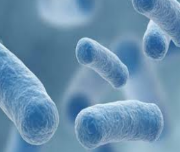The Potential of Single Bulb Garlic Fermented with Lactobacillus plantarum B1765 to Manage Gluconeogenesis and Inflammation in Type-2 Diabetes Mellitus Rats
Main Article Content
Abstract
Chronic inflammation and increased gluconeogenesis are key drivers of insulin resistance and hyperglycemia in type 2 diabetes mellitus (T2DM). Targeting these mechanisms could improve glycemic control and reduce diabetes-related complications. This study evaluated the therapeutic potential of fermented single-bulb garlic (FSBG) paste as an alternative or adjunct treatment for T2DM. Using a rat model, we assessed the effects of FSBG (100, 200, 300 mg/kg) and metformin (9 mg/kg) on pro-inflammatory cytokines (IFN-γ, IL-17) and gluconeogenic enzymes (glucose-6-phosphatase, pyruvate carboxylase). FSBG significantly reduced cytokine and enzyme levels (p < 0.001), with sustained effects observed two weeks post-treatment. These findings suggest that FSBG exerts both anti-inflammatory and anti-gluconeogenic actions, offering a promising natural alternative to conventional therapy. Further studies are warranted to confirm its long-term efficacy and optimize dosing strategies.
Downloads
Article Details
Section

This work is licensed under a Creative Commons Attribution-NonCommercial-NoDerivatives 4.0 International License.
How to Cite
References
1 Bocanegra A, Macho-González A, Garcimartín A, Benedí J, Sánchez-Muniz FJ. Whole alga, algal extracts, and compounds as ingredients of functional foods: Composition and action mechanism relationships in the prevention and treatment of type-2 diabetes mellitus. Int J Mol Sci. 2021; 22:3816.
2 Reed J, Bain S, Kanamarlapudi V. A review of current trends with type 2 diabetes epidemiology, aetiology, pathogenesis, treatments and future perspectives. Diabetes Metab Syndr Obes. 2021; 14:3567–3602.
3 Rodwell VW, Bender DA, Botham KM, Kennelly PJ, Weil PA. Harper’s Illustrated Biochemistry. 31st ed. McGraw-Hill Education, 2018.
4 Onyango AN. Excessive gluconeogenesis causes the hepatic insulin resistance paradox and its sequelae. Heliyon. 2022; 8:e12294.
5 Gruszka A. New insight into the mechanisms of the anti-hyperglycemic action of metformin. Br J Med Res. 2016; 13:1–9.
6 De Candia P, Prattichizzo F, Garavelli S, De Rosa V, Galgani M, Di Rella F, Spagnuolo MI, Colamatteo A, Fusco C, Micillo T, Bruzzaniti S, Ceriello A, Puca AA, Matarese G. Type 2 diabetes: How much of an autoimmune disease?. Front Endocrinol. 2019; 10:451.
7 Velikova TV, Kabakchieva PP, Assyov YS, Georgiev TA. Targeting inflammatory cytokines to improve type 2 diabetes control. Biomed Res Int. 2021; 2021:7297419.
8 El-Saadony MT, Saad AM, Korma SA, Salem HM, Abd El-Mageed TA, Alkafaas SS, Elsalahaty MI, Elkafas SS, Mosa WFA, Ahmed AE, Mathew BT, Albastaki NA, Alkuwaiti AA, El-Tarabily MK, AbuQamar SF, El-Tarabily KA, Ibrahim SA. Garlic bioactive substances and their therapeutic applications for improving human health: a comprehensive review. Front Immunol. 2024; 15:1277074.
9 Nabila L, Wikandari PR. Activity of inulinase enzyme from Lactobacillus plantarum B1765. Unesa J Chem. 2018; 7:44–47.
10 Nogal A, Valdes AM, Menni C. The role of short-chain fatty acids in the interplay between gut microbiota and diet in cardio-metabolic health. Gut Microbes. 2021; 13:1–24.
11 Wikandari PR, Herdyastuti N, Tukiran, Dzulkarnain SA. Evaluation of the potency of fermented single-bulb garlic cultured with Lactobacillus plantarum B1765 as an antidiabetic in type 2 diabetic rats. Trop. J. Nat. Prod. Res. 2024; 8:6858–6863.
12 Kumashiro N, Beddow SA, Vatner DF, Majumdar SK, Cantley JL, Guebre-Egziabher F, Fat I, Guigni B, Jurczak MJ, Birkenfeld AL, Kahn M, Perler BK, Puchowicz MA, Manchem VP, Bhanot S, Still CD, Gerhard GS, Petersen KF, Cline GW, Shulman GI, Samuel VT. Targeting pyruvate carboxylase reduces gluconeogenesis and adiposity and improves insulin resistance. Diabetes. 2013; 62:2183–2194.
13 Dowidar M, El-Saadawy H, Gobran MT, Gad HA. The hypoglycemic effects of ginger and garlic administration on induced diabetic rats. Zagazig Vet J. 2019; 47:134–145.
14 Adina-Zada A, Zeczycki TN, Attwood PV. Regulation of the structure and activity of pyruvate carboxylase by acetyl CoA. Arch Biochem Biophys. 2012; 519:118–130.
15 Blaak EE, Canfora EE, Theis S, Frost G, Groen AK, Mithieux G, Nauta A, Scott K, Stahl B, van Harsselaar J, van Tol R, Vaughan EE, Verbeke K. Short chain fatty acids in human gut and metabolic health. Benef Microbes. 2020; 11:411–455.
16 Rena G, Hardie DG, Pearson ER. The mechanisms of action of metformin. Diabetologia. 2017; 60:1577–1585.
17 Elahi R, Nazari M, Mohammadi V, Esmaeilzadeh K, Esmaeilzadeh A. IL-17 in type II diabetes mellitus (T2DM) immunopathogenesis and complications; molecular approaches. Mol Immunol. 2024; 171:66–76.
18 Bayan L, Koulivand PH, Gorji A. Garlic: a review of potential therapeutic effects. Avicenna J Phytomed. 2014; 4:1–14.
19 Arreola R, Quintero-Fabián S, Lopez-Roa RI, Flores-Gutierrez EO, Reyes-Grajeda JP, Carrera-Quintanar L, Ortuño-Sahagún D. Immunomodulation and anti-inflammatory effects of garlic compounds. J Immunol Res. 2015; 2015:401630.
20 Anggraini PD, Mufinadiroh M, Susanto H, Lukiati B, Lestari SR. Potential of single garlic to prevent pro-inflammatory macrophage and inflammation in HFD Mice. J Trop Life Sci. 2022; 12:101–106.
21 Ahmad R, Oli AN, Etando A, Sharma P, Sinha S, Chowdhury K, Rowaiye AB, Akter S, Mou TJ, Dhingra S, Ahmed MF, Nusrat N, Azmuda N, Lugova H, Adnan N, Haque M. Lactic acid bacteria fermented foods: Impact on immune system and consequences over type 2 diabetes mellitus. J Appl Pharm Sci. 2023; 13:18–56.
22 Saryono, Nani D, Proverawati A, Sarmoko. Immunomodulatory effects of black solo garlic (Allium sativum L.) on streptozotocin-induced diabetes in Wistar rats. Heliyon. 2021; 7:e08493.




